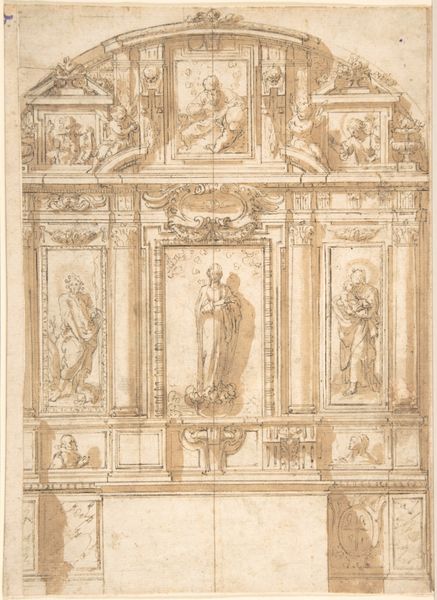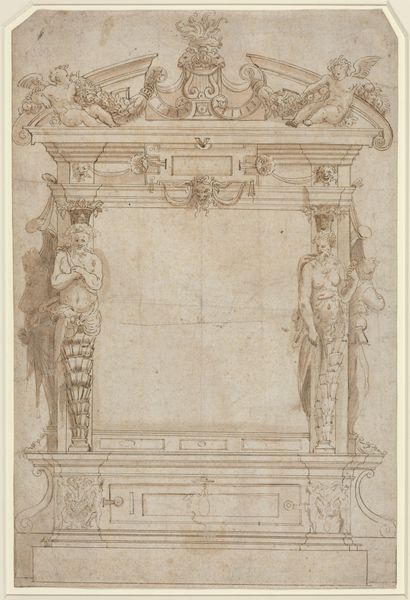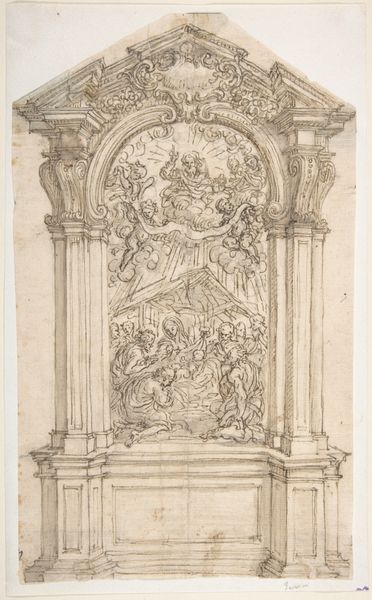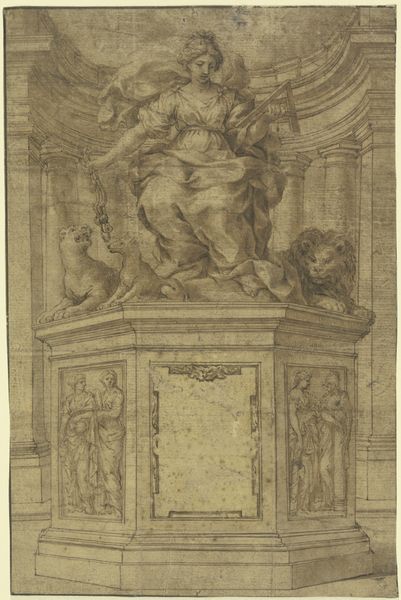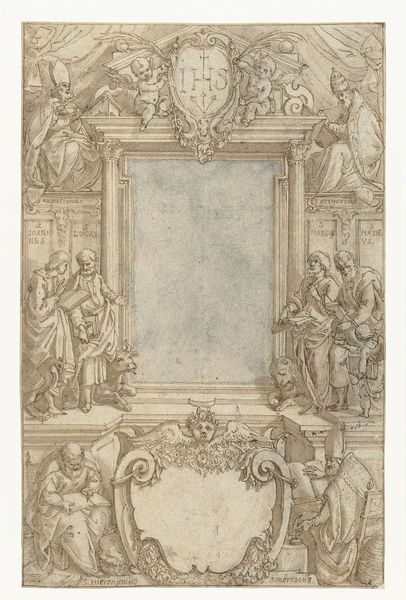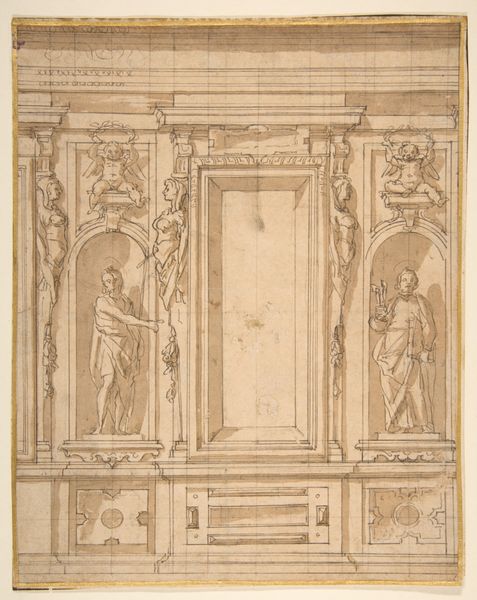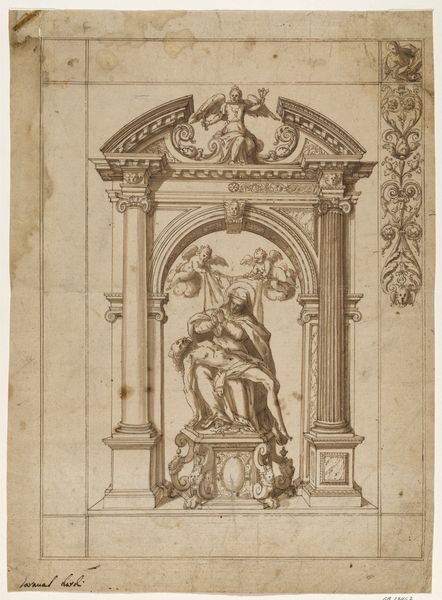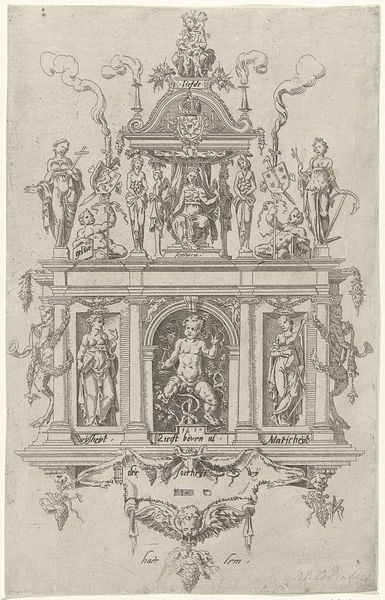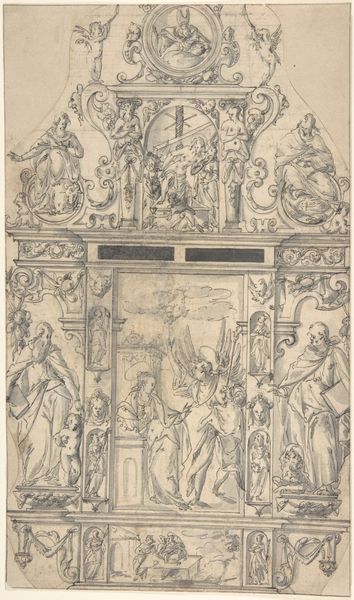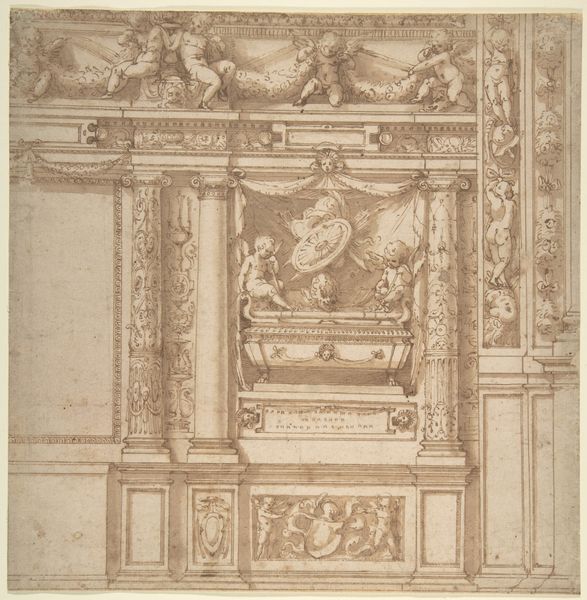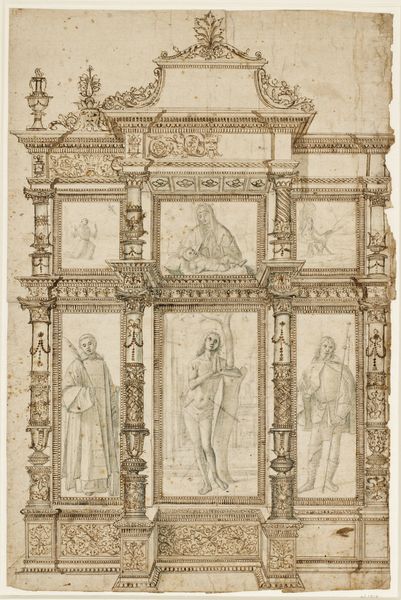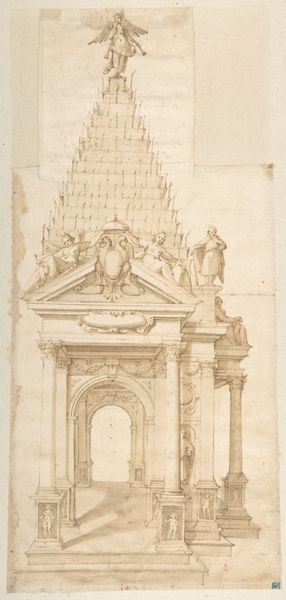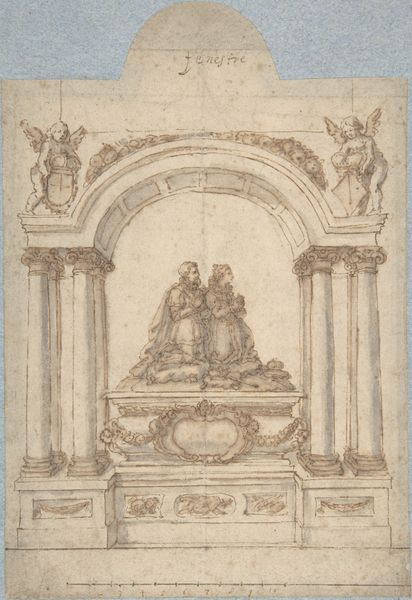
Ontwerp voor een ereboog ter gelegenheid van de inkomst van paus Innocentius XI te Perugia in 1686 1686
0:00
0:00
drawing, paper, ink, architecture
#
drawing
#
allegory
#
baroque
#
paper
#
ink
#
cityscape
#
history-painting
#
architecture
Dimensions: height 270 mm, width 233 mm
Copyright: Rijks Museum: Open Domain
Curator: What strikes me immediately about this drawing is the monochromatic ink wash; it lends a spectral air to the triumphal arch. Editor: Yes, Carlo Lamparelli executed this "Ontwerp voor een ereboog ter gelegenheid van de inkomst van paus Innocentius XI te Perugia in 1686," around 1686. It depicts a design, an *ontwerp* as the Dutch title indicates, for a triumphal arch planned for a papal visit. Curator: Planned but never built, I presume? Which turns this object into something different altogether. The material record of a celebration that never took place. I am fascinated by the economic outlay required for the production of the ink and paper to record this planned celebration! Editor: Precisely. Consider the socio-political currents at play. These arches, historically, served as powerful tools for projecting authority. Designing one for Pope Innocent XI, especially during the Baroque period, spoke volumes about the city's allegiance and desired favor. The allegorical figures across the top must have been chosen carefully to broadcast a very specific message. Curator: Absolutely, though I confess my eye keeps drifting back to the physical presence of the drawing itself. The materiality tells a story too. The artist’s hand, the paper grain, the tonal range achieved through the ink—all become part of the symbolic exchange. Look at how meticulously the brickwork is rendered, emphasizing labour. It is like a map of production. Editor: That’s a great point. There’s a clear tension between the idealized imagery – the heroic figures, the symbols of papal power – and the very tangible reality of Perugia's social hierarchy that’s alluded to with such ornamentation. I would suggest this reveals not just celebration, but negotiation of social positions and expectations. Curator: So the very act of its design, documented in ink, became a performance of power, a negotiation enacted on paper before it could be realised materially? I love that it draws attention to labour by so carefully sketching brick work. Editor: A beautiful pre-emptive performance! It invites us to reconsider these celebratory monuments and see these sketches not as records of the past, but arguments about the future. Curator: It's made me appreciate how much context an unbuilt artwork can provide. Editor: And me, the way process reveals not only intention, but also, potentially, unfulfilled expectations.
Comments
No comments
Be the first to comment and join the conversation on the ultimate creative platform.
